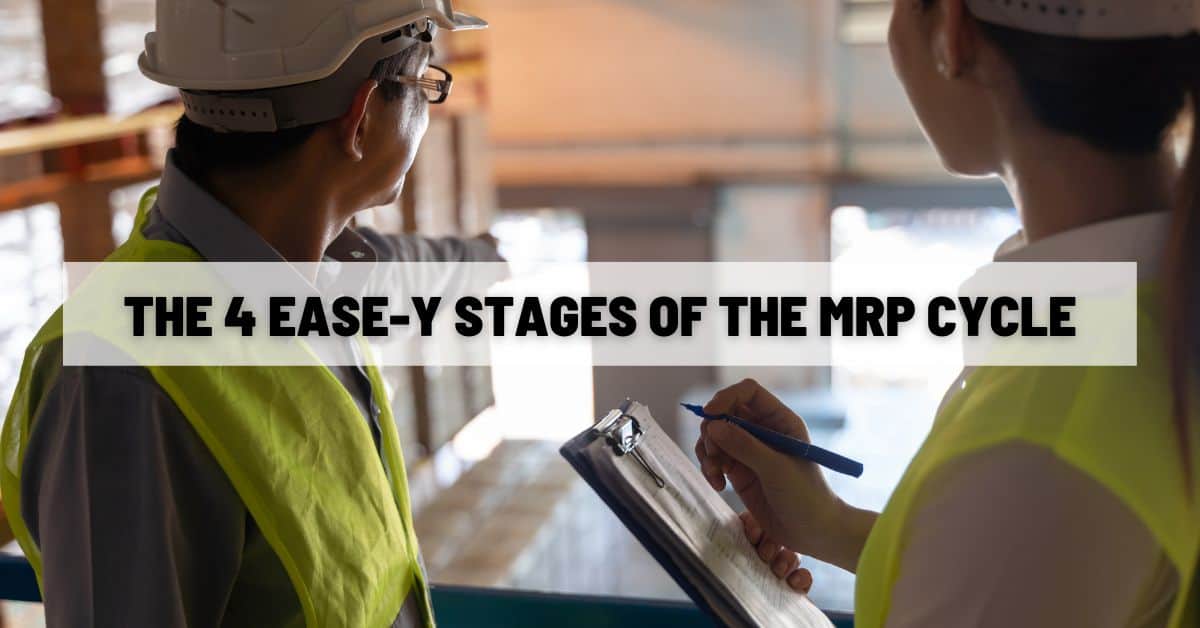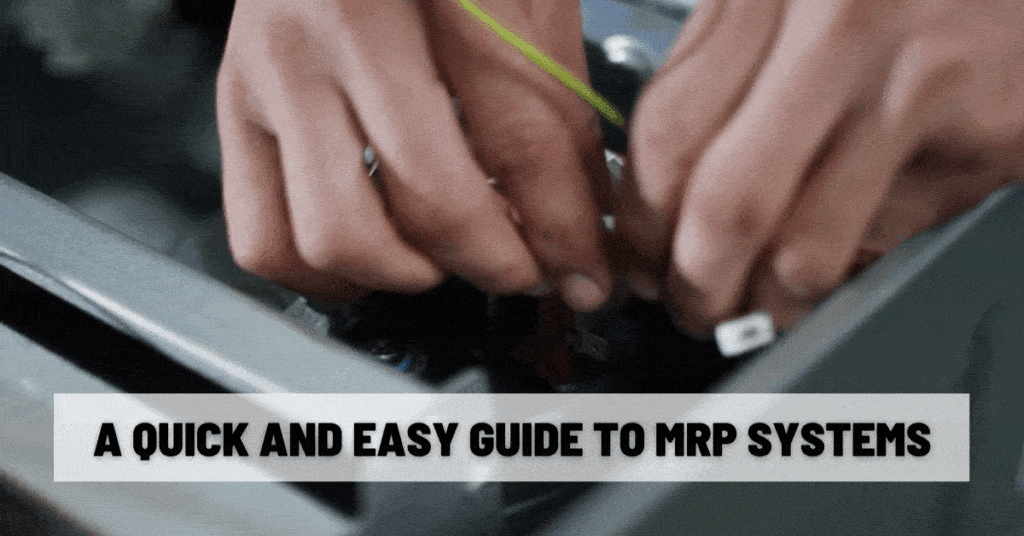4 Steps of Material Requirements Planning (MRP) Explained with E.A.S.E.
MRP (Manufacturing Resource Planning or, more archaically, Material Requirements Planning) is a method of managing manufacturing resources so you can efficiently balance products sold, units built, and materials required.
Most often, that takes the form of a dedicated software suite. But what are the computers doing, exactly?
When you get right down to it, MRP is a closed loop of 4 steps: Estimate demand, Allocate resources, Schedule production, and Eliminate problems. (What could be EASE-ier, right?)

The 4 EASE-y Stages of the MRP Cycle
1: Estimate demand
First things first, you need to figure out how much you expect to produce and sell, when, and how much raw material you’ll need to buy to make that happen.
At minimum, this involves piping all incoming orders into the MRP system. You can also input sales forecasts or (depending on your particular MRP system’s feature-set) have the system produce demand forecasts for you.
Using the bills of materials for your products, the MRP system can then determine demand for the base components, raw materials, labor, etc.
2: Allocate resources
Next, the MRP system compares demand (as determined in Step 1) to your current inventory.
It checks what items you have in stock and where they are. The system also tracks, among other things, which items are physically in the warehouse but can’t be used for the current project because they’re already allocated for another, and items that aren’t physically present yet but have already been ordered.
The system can then tell you what items to move where and recommend reorders if necessary.
3: Schedule production
The system works out a timetable for the physical work based on estimated manufacturing time, supplier lead times, and so on.
If followed, this schedule will result in completed builds with a minimum of wait time for your customers.
The MRP system also identifies what machinery and workstations are needed for each step and generates the appropriate work orders, purchase orders, and transfer orders.
4: Eliminate problems
This is your ongoing action item. As the actual process of production goes on, the MRP system watches for issues and unexpected changes, so you can adapt as you go.
Because the system tracks raw materials through the flow of work/production orders and customer sales orders, it can automatically alert your team when items are delayed and make recommendations for existing orders.
If the situation changes or if one of your projections turns out not to be accurate, the system can suggest a Plan B to adapt to the discrepancy.

Does Your Business Need MRP?
If an MRP system sounds like it would be useful for your business, but you want a more unified, company-wide system with accounting functionality, sales applications, and more, you’re probably looking for ERP (enterprise resource planning).
Nearly any ERP system will have all the essential MRP features, but that’s just the tip of the ERP iceberg.
To find out how AcctVantage ERP (with its MRP features) can support your ongoing business growth and success, click here to get in touch with us.




